Survival Skills
How To Start A Fire In Rain With Wet Wood
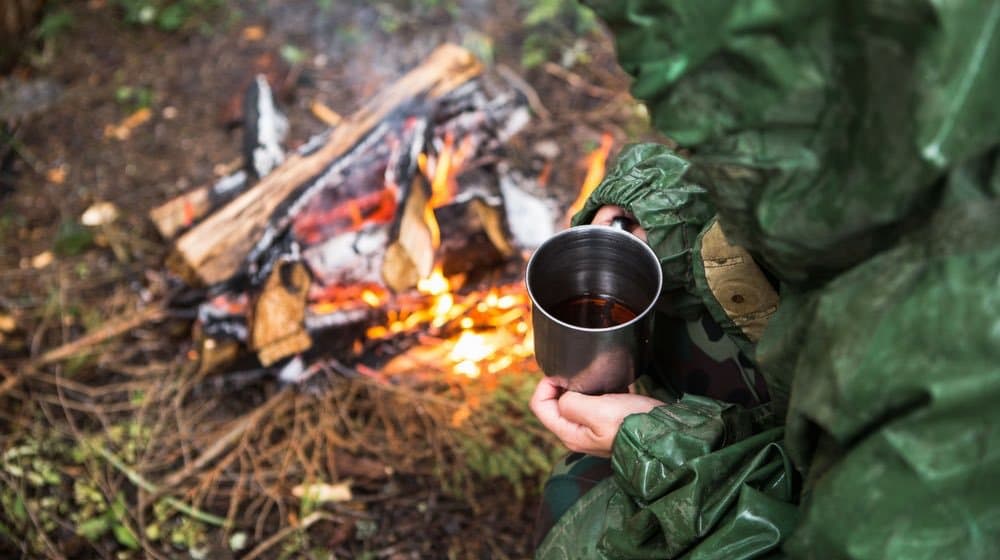
When you need a fire the most, is when the conditions to create it will be at their worst. Even if you’ve conquered the art of fire crafting, it can all go to hell when a little rain is added to the mix. So What do you do when the weather is working against you and getting a fire going doesn’t seem to be in the cards? These 5 tips could keep you high and dry:
How To Start A Fire: Building Fire On A Rainy Day
Your body is in a constant state of losing heat and most of the time that’s a good thing. But when it’s cold, wet and rainy, as little as 3 hours could be a death sentence. Hypothermia can happen at temperatures as warm as 50 degrees. Your best bet is to get a fire going fast. But how do you do that when everything is soaking wet?
1. Find Dry Tinder
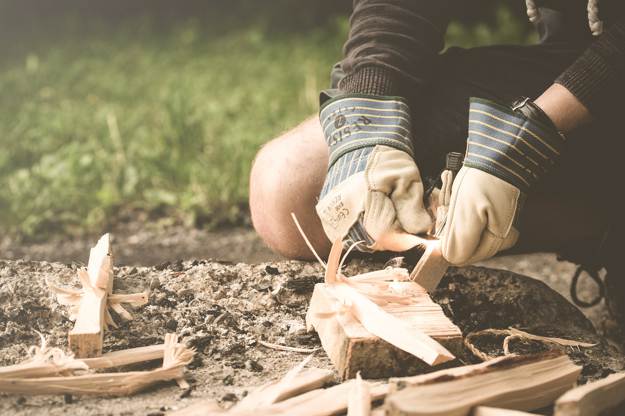
Tinder is any flammable substance that has a large surface area, can take a spark, and burns hot enough to dry out and ignite your larger kindling. This can be anything from dried grass, pine needles, or moss; to the shaved denim on your jeans or even lint from your socks. The key is that it has the most surface area possible and that it is dry. it doesn’t matter how much tinder you gather, if it’s soaking wet, it will never take a spark. If you don’t have tinder on you, look for it in covered areas that have been out of the downpour such as the crooks of trees or crevices between rocks or under the eves of trees.
Be prepared and make your own Tinder here.
2. Kindling
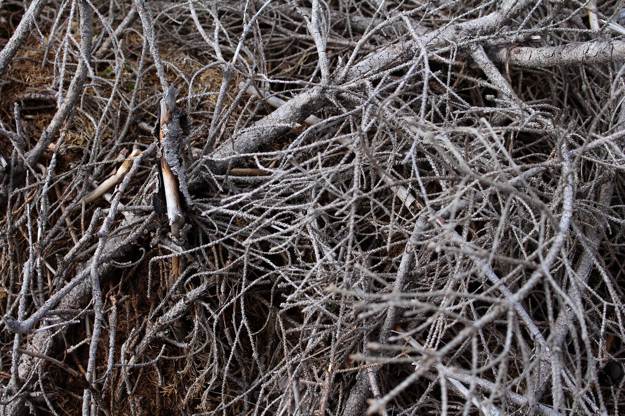
Look for covered branches, twigs, or wood that has been kept out of the elements. Good kindling should snap when you bend it. If it bends or splits but does not snap… keep looking for more kindling. Also, never assume that you have enough kindling…. just how much is enough? Check out our guide on How To Build A Campfire.

3. Dry Ground
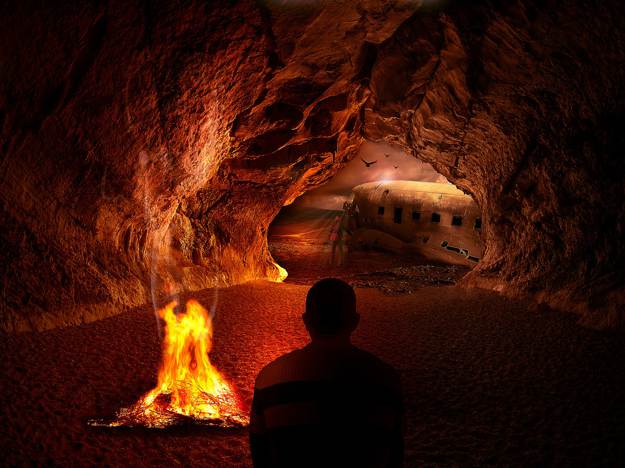
Next, you’ll need to find or create a dry platform for your fire. The optimal place would be inside a cave but you could also hang a high tarp to prevent the rain from reaching your campfire. If you have tinfoil in your kit, it makes a perfect barrier to ground moisture. Nothing will put your fire out faster than wet ground. If you don’t have any tinfoil, laying down a small pile of dry kindling under your tinder could keep your fire lit long enough to catch your fuelwood.
4. Organize Your Fuel
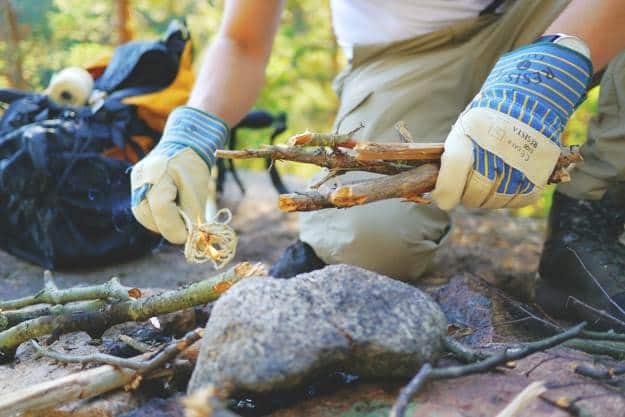
Keeping your campfire organized is the key to a good, long-lasting fire. Make sure that you have access to enough fuelwood to keep the fire going through the night. The worst thing you can do at this point is to get a fire going just long enough to run out of fuel in the middle of the night leaving you scrambling dangerously in the dark.
Speaking of fuelwood… Which one works best for a fire?
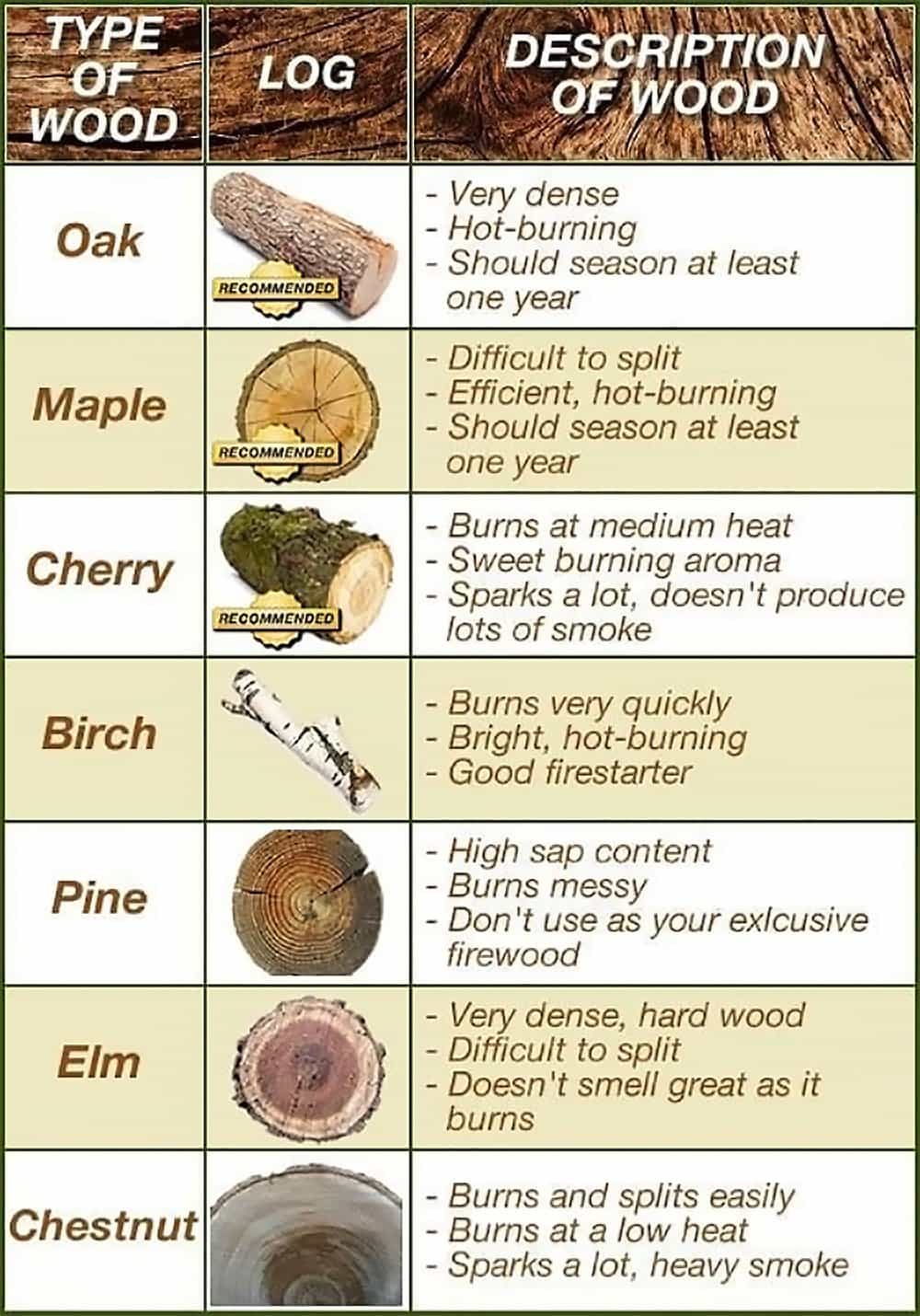
Image Courtesy of Offgridweb.com
5. Start Your Fire
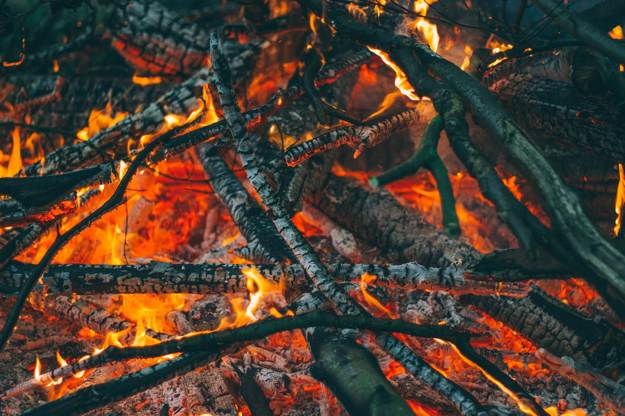
The next step is to choose the type of fire you’re going to build… When it comes to campfires, you’ve got options.
Below are a few of my favorites with a description of when to use them:
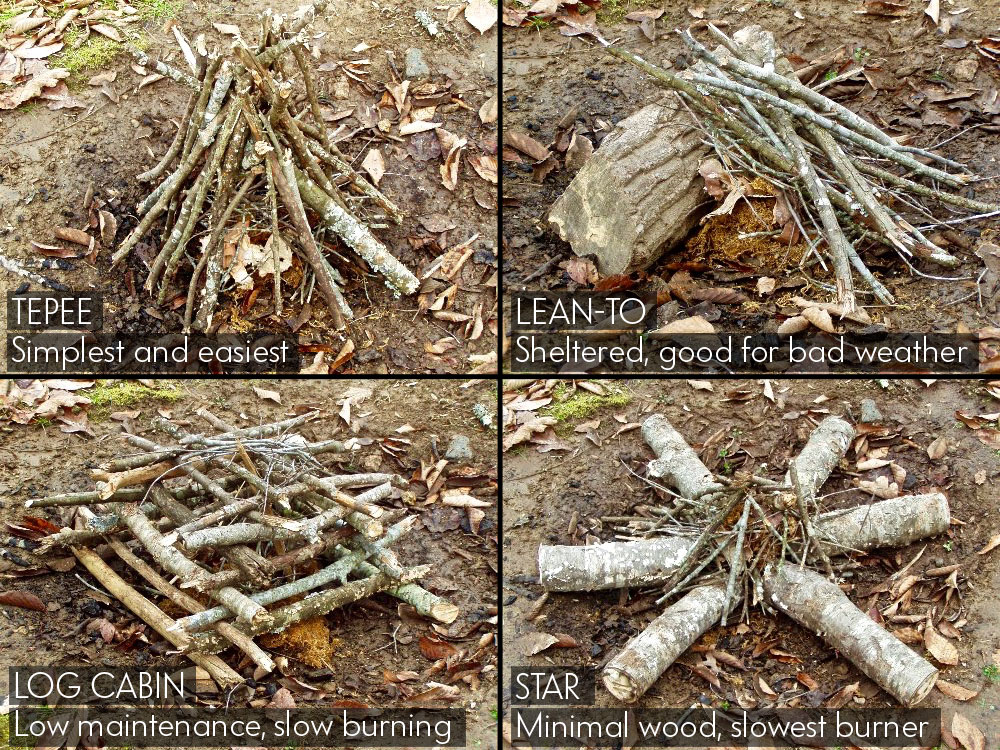
Image courtesy of Atlas and Boots – 4 Best Campfires and when to use them
Once you’re all set and ready to get a roaring fire, a standard Bic lighter is your best bet. But don’t worry… No lighter? No problem. Here are 5 Natural Firestarters you can use.
Creating a friction fire is another skill you should keep in your mental armory…. It’s the one thing that will work when all else fails (but it does require a ton of practice!)
Check out this video to learn how to start a fire by friction:
No matter how long you’ve been practicing fire craft, getting a fire going is never a sure bet. But with a lot of practice and built-in redundancy will go a long way to help you out.
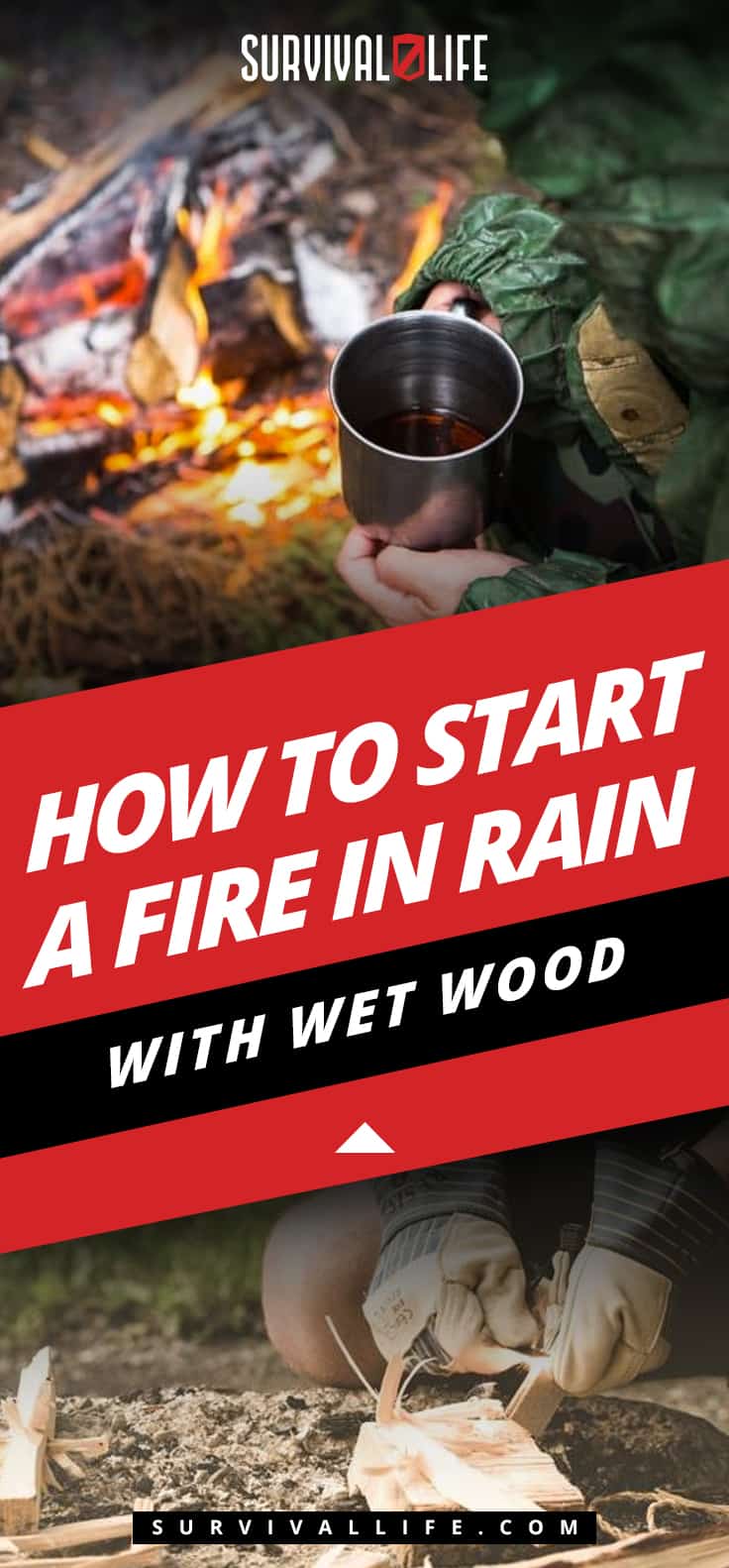
Did we miss anything? Do you have another fire starting secret you’d like to share? Let us know in the comments below.
Up next: Don’t fall for THIS Cold Weather Survival Hazard
Follow us on Facebook, Instagram, Twitter, Pinterest, and Tumblr!
-

 Do It Yourself7 months ago
Do It Yourself7 months agoParacord Projects | 36 Cool Paracord Ideas For Your Paracord Survival Projects
-

 Do It Yourself10 months ago
Do It Yourself10 months agoHow To Make Paracord Survival Bracelets | DIY Survival Prepping
-

 Do It Yourself9 months ago
Do It Yourself9 months ago21 Home Remedies For Toothache Pain Relief
-

 Do It Yourself10 months ago
Do It Yourself10 months agoSurvival DIY: How To Melt Aluminum Cans For Casting
-

 Exports8 months ago
Exports8 months agoAre Switchblades Legal? Knife Laws By State


Mark 'DARTMAN' Cutrera
December 9, 2017 at 5:53 PM
I have two weather treated jacket’s that resist moisture and both have 2(one each side) weather lined and insulated zippered pocket’s on the inside front-side’s. When I use to do a lot of camping, I carried cedar shaving’s(mid to large/2″–$” in length) in one of the pocket’s and a small note pad in the other. Also had thin cut cedar shaving’s and small thin starter split’s-6 to 8: 1/2″x6″ in the bugout bag. Helps to repel and keep bugs out of your bag and tent also if carrying food. Just don’t be offended if everything smells like cedar. I like it! Good luck.
Pingback: Plastic Bottles Uses That Can Save Your Life | Survival Life
Pingback: Plastic Bottles | Uses That Can Save Your Life | Primitive technology
Pingback: Ways To Start A Fire: Unconventional Tricks and Techniques | Survival Life
Pingback: Ways To Start A Fire | 17 Unconventional Tricks And Techniques - Survival Patch
Pingback: 5 Useful Tips For Camping In The Rain | Best Go Bag